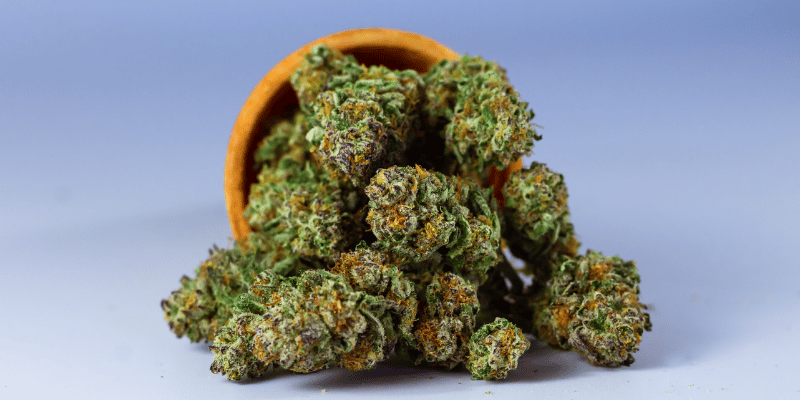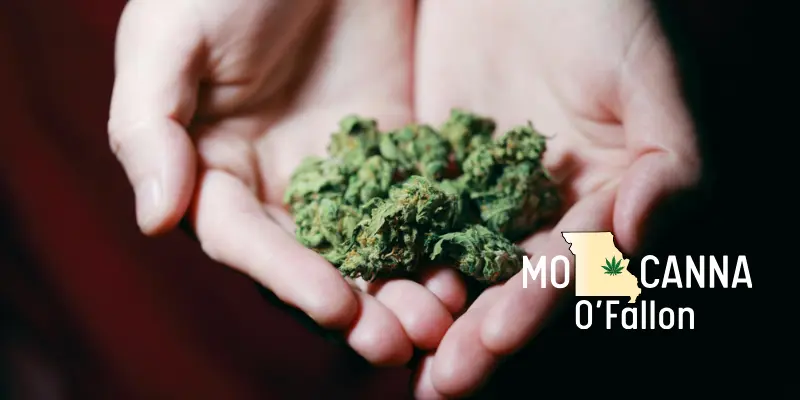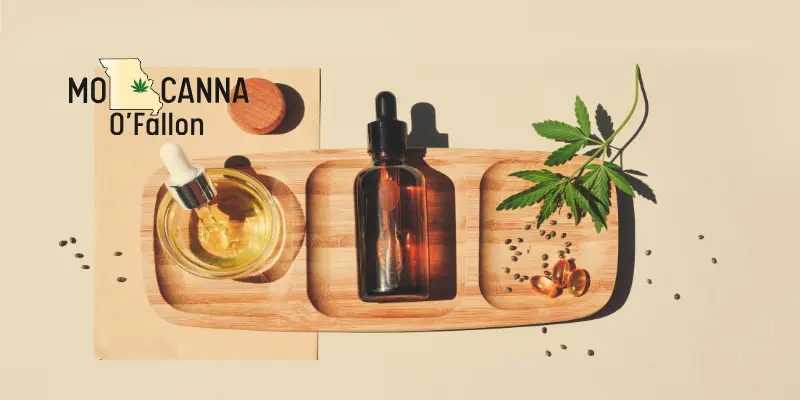
Smart Storage: How to Keep Your Cannabis Fresh, Potent, and Child-Safe Year-Round in Missouri
Introduction
Imagine buying a premium eighth from MO Canna O’Fallon, opening the jar a month later, and finding the buds smell like hay instead of pine and citrus. Terpenes have evaporated, cannabinoids have degraded, and you are left with a harsh smoke and muted effects. Proper storage is not glamorous, yet it plays a huge role in preserving flavor, potency, and safety. In humid summers, bone-dry winters, and homes with curious children or pets, the right container and routine can make the difference between disappointment and delight. This guide covers best practices for Missouri’s shifting climate, explains the science behind freshness, and gives actionable steps you can start tonight.
Why Cannabis Degrades Over Time
Cannabis is a botanical product rich in volatile compounds. Three enemies hasten quality loss: oxygen, light, and extreme humidity. Oxygen oxidizes THC into less psychoactive CBN. Ultraviolet light breaks down terpene bonds, dulling aroma. Humidity swings spur mold growth when high and brittle trichomes when low. Missouri’s weather can swing from ninety-degree dew points in July to furnace-blown dryness in January, creating an ideal storm for degradation if your stash sits in a flimsy baggie.
Ideal Temperature and Humidity Ranges
Laboratory studies show that cannabinoids remain stable longest at temperatures between 60 °F and 70 °F with a relative humidity (RH) of 55 – 62 percent. Above 65 percent RH, mold spores thrive; below 50 percent, trichomes dry out and shatter. O’Fallon residents often endure summer afternoons over 90 percent RH and winter mornings under 30 percent RH, stressing the importance of a controlled micro-environment inside your jar.
Choosing the Right Container
Airtight Glass Jars
Thick, food-grade glass with a locking lid and silicone gasket is the gold standard. Amber or cobalt colors block more light than clear glass, extending terpene life. Wide mouths prevent crushing delicate buds when you reach in with fingers or a scoop. Fill jars at least two-thirds full to minimize empty air space. After each use, burp the jar gently to refresh air and reseal.
Vacuum-Seal Canisters
Some connoisseurs use countertop vacuum canisters. These remove most oxygen, slowing oxidation. However, repeated vacuum cycles can rupture fragile trichomes if performed daily. Reserve this method for long-term storage of bulk flower that you will not open for weeks.
Stainless-Steel Tins
Stainless steel blocks all light and resists shattering. Choose medical-grade varieties with a silicone ring. Their lighter weight makes them popular among traveling patients, though they may transfer a metallic smell if left uncleaned.
Child-Resistant Options
Missouri law requires that any cannabis stored in a household with minors be kept in child-resistant packaging. Look for press-and-twist lids or locking lids certified to ASTM D3475 standards. Many brands sold at MO Canna O’Fallon now integrate child-safe technology directly into glass jars, letting you comply without extra gadgets.
Incorporating Humidity Control Packs
Two-way humidity control packs maintain a preset RH by releasing or absorbing moisture. Popular brands list their target percentage on the packet, typically 58 or 62 percent. Slip one inside your jar, replace every two to three months, and your buds will stay springy without growing mold. Avoid one-way desiccant packs meant for electronics; those pull moisture out with no stop point, overdrying the flower.
Best Practices for Concentrates and Vapes
Concentrates
Shatter and brittle wax should remain in parchment only briefly. For longer storage, transfer to a nonstick silicone or borosilicate glass container. Keep in the refrigerator if you plan to store for more than a month, but let the concentrate warm to room temperature before opening to avoid moisture condensation. Do not freeze glass jars; sudden expansion can crack them.
Vape Cartridges
Store upright in a cool, dark drawer. Extreme heat causes the oil to thin and flood the mouthpiece, while cold thickens it and may clog the wick. If you keep cartridges in a car during a Missouri July, expect leakage. Instead, carry them in a small, padded case inside a purse or backpack and avoid leaving them in direct sunlight.
Edible and Tincture Storage
Edibles often contain butter, sugar, or gelatin—ingredients that spoil faster than cannabinoids. Keep gummies in their original child-resistant pouches, away from sunlight and out of reach of minors. Refrigeration can extend shelf life by weeks, though texture may firm up. Chocolate bars belong in a cool closet because refrigeration causes bloom, the white film from separated cocoa butter. Alcohol-based tinctures are naturally shelf stable for a year when stored tightly capped at room temperature. Oil-based tinctures benefit from dark glass and a cool cabinet but solidify under 50 °F; simply warm the bottle between your hands before dosing.
Avoiding Common Storage Mistakes
Using Plastic Baggies
Disposable plastic is porous to oxygen and clings to trichomes, stripping potency. The thin walls provide no protection against light or temperature spikes. If you must transport flower briefly, double-bag and move to glass at home.
Refrigerators Without Humidity Control
Standard fridges hover around 35 °F with low humidity. Cold air condenses moisture on surfaces after you open the door, depositing tiny water droplets that invite mold when temperatures rise. Dedicated cannabis fridges or wine coolers allow precise RH and temperature settings; otherwise store flower in a cool pantry.
Leaving Gear in the Car
Cars in O’Fallon routinely exceed 120 °F in summer. Heat pushes terpenes to vaporize, permanently stealing aroma. Cold winters below freezing can crystalize concentrates and crack cartridges. Always bring your stash inside.
Travel Tips for Compliance and Freshness
Missouri permits adults to transport cannabis in sealed containers kept out of reach of the driver. Place jars inside a lockable case in the trunk. For road trips to states that recognize Missouri medical cards, research reciprocity rules first. Keep receipts from MO Canna O’Fallon with your product as proof of legal purchase.
Pet Safety Considerations
Dogs are notorious for sniffing out sweet-smelling edibles. Store infused treats higher than countertop level and inside a latch-top bin. If a pet ingests THC, contact your veterinarian or the ASPCA Animal Poison Control Center immediately. Symptoms include ataxia, drooling, and lethargy. Quick veterinary intervention usually leads to full recovery, but prevention is easier than an emergency trip.
Long-Term Storage for Heavy Buyers
If you prefer buying flower in bulk, divide the purchase into weekly-use jars, sealing the rest in mason jars with humidity packs. Label each jar with strain name and date using painter’s tape so adhesive residue does not contaminate glass. Rotate stock: finish older jars before opening newer ones. For very long periods (six months or more), consider a vacuum-sealed mylar bag inside an opaque box kept at cellar temperature around 60 °F.
Dealing with Humidity Swings in Historic Homes
Older houses in St. Charles County often lack central air, leading to huge indoor humidity peaks. Invest in a small hygrometer to monitor RH where you store cannabis. During muggy spells, place desiccant pouches outside your stash jars within the same cabinet to buffer ambient moisture. In winter, a bowl of water near heat vents can prevent air from dropping below 30 percent RH, protecting both your buds and your sinuses.
Signs Your Cannabis Has Gone Bad
Stale cannabis loses its vibrant green and may turn brown or tan. Aromatic complexity fades, leaving a generic hay scent. Touch the bud; if it crumbles to dust, RH was too low. If it feels spongy or smells musty, humidity was too high. Under a flashlight, mold appears as fuzzy gray or white patches—discard immediately. Smoking moldy flower can cause lung irritation or infection.
Quick-Fix Reviving Techniques
Accidentally dried your jar? Add a fresh 58 percent humidity pack and wait twenty-four hours. Do not use fruit peels; they introduce sugars that feed mold. Overly moist flower can be rescued by spreading buds on parchment paper in a dark room with a fan for a few hours, then returning them to a jar with a lower RH pack.
Legal Storage Requirements in Missouri
State regulations stipulate that cannabis must be stored in child-resistant containers at home. If transporting, products must remain sealed and inaccessible to drivers. Home cultivators (medical card holders with a grow license) must keep harvested flower under lock and key. Failure to comply can result in fines or revocation of a patient license. Following these rules also keeps your family and visitors safe.
Crafting a Personal Storage Station
Convert a small closet shelf into a cannabis vault. Use opaque bins for jars, a locked cash-box for concentrates, and a mini temperature-controlled humidor for high-end flower. Install a hygrometer with an alarm to notify when RH drifts. Add silica packets on lower shelves to absorb ambient moisture. Keep cleaning wipes and spare humidity packs in a labeled basket for easy maintenance.
Sustainable Storage Choices
Glass and stainless steel are endlessly reusable. Avoid one-use plastics when possible. If you upgrade jars, donate old but functional containers to friends or recycle them locally. Battery-powered humidity monitors use minimal energy, and many last a year on a single AAA cell.
Conclusion
Whether you prefer flavorful flower, crystal-clear concentrates, or discreet gummies, storing cannabis correctly protects your investment, safeguards children and pets, and ensures every session tastes as good as the first. Missouri’s climate demands attention to temperature and humidity, but a few affordable tools and mindful habits will keep your stash in peak condition throughout scorching summers and dry winters. Need help choosing the perfect jar, humidity pack, or child-resistant lock? Contact the team at MO Canna O’Fallon and let our knowledgeable staff set you up for year-round freshness.








































